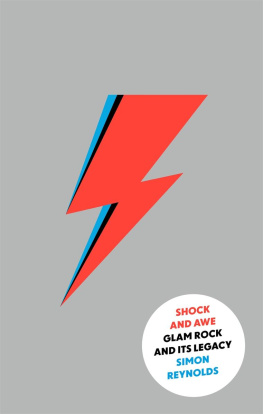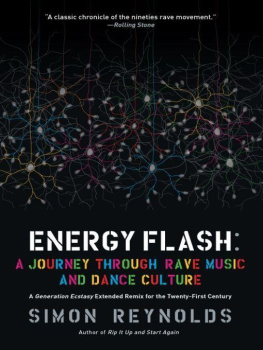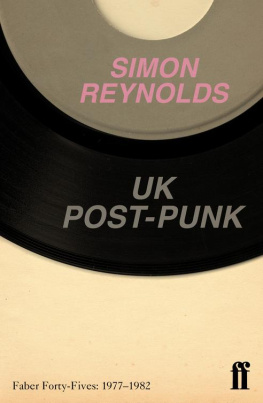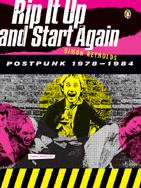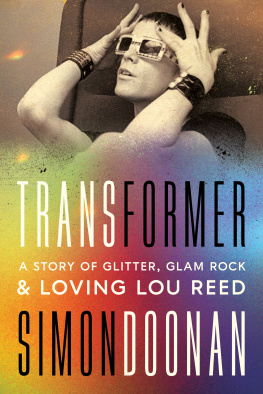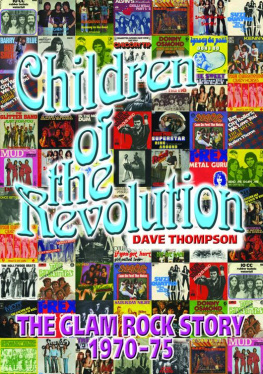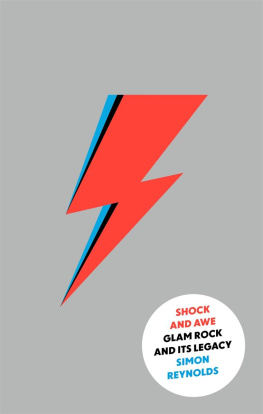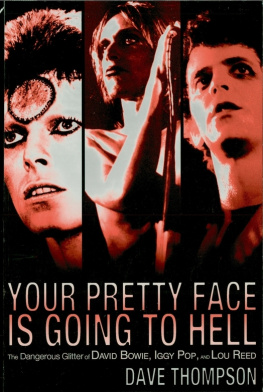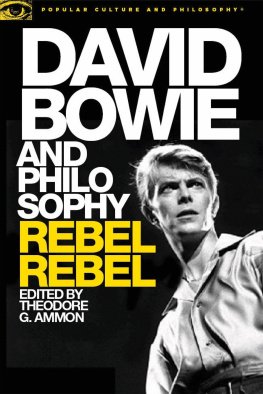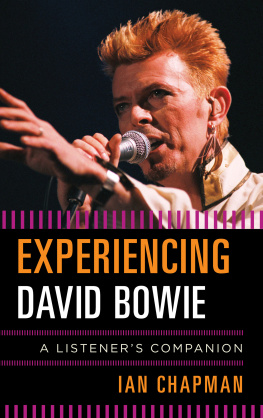Somewhere between All You Need Is Love and Hot Love, between The Beatles and T. Rex, pop music began for me.
And it began primarily on the television screen, reaching me through kids TV shows and Top of the Pops.
During most of the shows four decades of existence, Top of the Pops jumble of chart entries and rising hits made for a fairly motley parade of middle-of-the-road fare, novelty singles and merely professional pop. During the early seventies, though, the balance at Top of the Pops tilted sharply towards the freaky and far-out. British pop was overrun by the absurd, the excessive and the grotesque. The show seemed garish, even for that majority of UK households who would still have been watching in black and white.
Thats what we had: a small black-and-white set. My family went without television until I was around the age of eight, which was 1971, so glam is pretty much the first pop music I can remember clearly. I didnt know glam as glam, a distinct and defined era of pop. What I saw on the TV screen was simply what pop was then: extreme and fantastical, silly and scary all at once.
One of my absolute earliest pop memories is being shaken by the sight and sound of Marc Bolan on Top of the Pops singing Children of the Revolution, or maybe Solid Gold Easy Action. It was the look of Bolan even more than the ominous sensuality of T. Rexs sound that transfixed me. That electric frizz of hair, the glitter-speckled cheeks, a coat that appeared to be made of metal Marc seemed like a warlord from outer space.
The spark that ignited the glam explosion, Marc Bolan had company very soon. The plastic insurrection of The Sweet. Gary Glitters barbarian bubblegum. The jubilant stomp and roar of Slade. Wizzards gaudy blare of horns and hair dye. Roxy Musics romping noise and mannered poise. Alice Cooper, a demonic Pied Piper. Sparks swashbuckling histrionics. And right in the midst of it all was David Bowie, set to straddle the decade like The Beatles had the sixties, a sustained presence of elegant strangeness in the pop charts. Space Oddity re-released in 1975, when it gave him his first #1 made the deepest impression on the mini-me.
This glam-derived idea of what pop is and should be alien, sensationalistic, hysterical in both senses, a place where the sublime and ridiculous merge and become indistinguishable never left me.
I rediscovered glam in the mid-eighties, by which time I had become a serious follower of music and fledgling critic. Those first impressions, burned into my dazed child-mind, were now joined by a more considered and conceptual overlay of ideas: the sense that something had been lost when punk and post-punk fatally demystified the process and exposed the mechanisms behind the spectacle. Playing battered seven-inch singles that my friends and I had dug out from charity shops and jumble sales songs by The Sweet, Glitter, Hello, Alice Cooper I felt the pull of a time when pop was titanic, idolatrous, unsane, a theatre of inflamed artifice and grandiose gestures. This long-gone, real-gone era seemed the opposite of what pop had become in the post-post-punk eighties: adult, responsible, caring and socially concerned.
*
Glam also known as glitter in the US refers to a cluster of artists and bands who are often connected by relationships of collaboration and shared management, and energised by friendly rivalry with each other. Glam also describes a sensibility, a spirit of the age that emerged around the start of the seventies and flourished for about four years, before petering out shortly prior to the punk explosion. Beyond this generally accepted historical reality of glam as era, genre, scene, movement it can also be seen as a continuum that encompasses both precursors within rock itself (Rolling Stones, Velvet Underground, Little Richard and others) and ancestors who predate rocknroll and form a lineage stretching back deep into the nineteenth century, or even earlier. Today, there are fans, critics and contemporary artists for whom glam is a creed, a cosmology almost: the prism through which they perceive everything they revere in music and pop culture.
In Shock and Awe, glam serves as an elastic label that covers all the obvious candidates but also some less usual suspects from art pop and theatrical rock, including The Sensational Alex Harvey Band, The Tubes and Queen. Like most music genres and scenes, glam is fuzzy, overlapping with other blurry-edge categories like teenybop, prog rock, singer-songwriter and hard n heavy rock. As a historical era, glam is fuzzy at each end too: artists like Bowie, T. Rex, Alice Cooper and Roxy Music emerged out of the longhair underground and took a while to shake off their post-psychedelic traits; many of the late-period glam figures either point towards punk or would actually enjoy a second phase of existence during the new-wave late seventies. Rather than get hung up on definitions, I have interpreted glam generously and loosely, following where the music, storylines and leading personalities seem to want to go.
That said, one larger definitional issue does warrant addressing: what is it that makes the glamorousness of glam different from the standard-issue razzle-dazzle of pop music? After all, varying degrees of elegance, choreographed stagecraft and spectacle are core features of pop in particular and showbiz in general. One crucial distinction is the sheer self-consciousness with which the glam artists embraced aspects like costume, theatrics and the use of props, which often verged on a parody of glamour rather than its straightforward embrace. Glam rock drew attention to itself as fake. Glam performers were despotic, dominating the audience (as all true showbiz entertainers do). But they also often engaged in a kind of mocking self-deconstruction of their own personae and poses, sending up the absurdity of performance.

